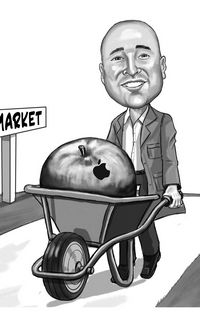Back with a bang
In spite of four consecutive quarters of missed earnings targets, investor appetite for GlaxoSmithKline’s bonds in December 2012 was far from spoiled.
With a £1.4bn dual-tranche offering, split into 15 and 33-year portions, the UK’s biggest drug maker not only scored a size record for the currency in the corporate bond market in the IFR year but also struck a balance between duration and spread, as evidenced by solid secondary market performance.
Leads Deutsche Bank, Goldman Sachs, HSBC and RBS began marketing the paper at Gilts plus 110bp–115bp and plus 105bp–110bp, respectively. Less than 90 minutes later, combined books had exceeded £1.4bn. This allowed guidance to be refined to the 110bp area and the plus 105bp area, each plus or minus 2bp.
Almost no price sensitivity saw orders continue to climb to just north of £2bn, skewed towards the longer piece, before final terms were set at 108bp and 103bp over, for £600m and £800m tranches. At the end of the IFR awards year in November, both parts were trading around 84bp over Gilts.
The 3.375% coupon on the 15-year part represented the lowest for a corporate sterling bond of that maturity ever and the spreads marked the tightest of the year for both maturity buckets in that ratings class (A1/A+) and currency.
Elis Wyn Jones, an origination official at Goldman Sachs, pinned a large part of the success on timing. “The third quarter of 2012 witnessed record corporate bond issuance thanks to a favourable funding environment, with cash technicals remaining strong and the cost of debt near a historical low.
“As we moved towards the end of the year, the performance of new deals in secondary markets remained solid and GSK was able to act swiftly to make the most of this momentum.”
Market observers described the choice of two tenors as strategically intelligent.
At the time, Neil Slee, a syndicate official at Goldman, said the different maturities had helped create pricing tension, spurring demand and enabling the company to sell more bonds than would have been the case with just one tranche.
“In addition, the average yield of the 15-year and the 33-year combined was distinctly lower than what it would have been on, say, the average maturity – a 24-year bond,” said Slee.
Prior to December 2012, GSK had not been in the public sterling bond market since 2008, giving it a degree of rarity value and encouraging a plethora of a accounts – chiefly from the UK but also from Germany, Switzerland and elsewhere in Europe – to take part.
And the transaction had knock-on effects for the company, with market players saying its success was instrumental in paving the way for GSK’s US$3bn multi-part offering that printed in March.
To see the full digital edition of the IFR Review of the Year, please click here.
To purchase printed copies or a PDF of this report, please email gloria.balbastro@thomsonreuters.com


